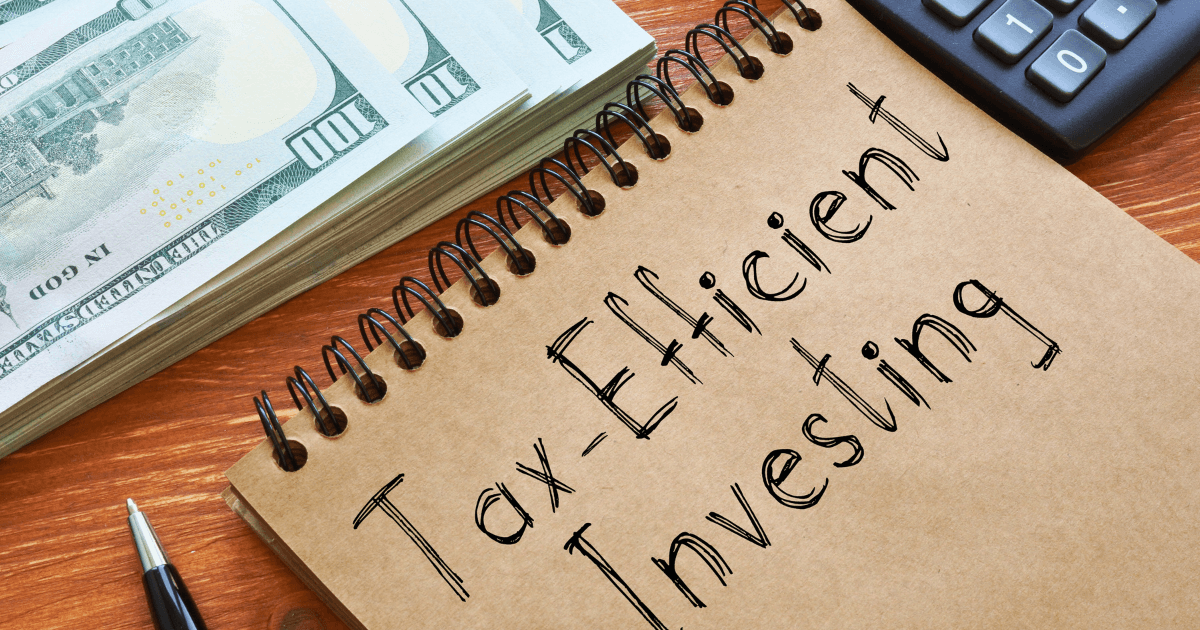Tax-Efficient Investing: Strategies to Keep More of Your Investment Returns

It’s not just about what you earn—it’s about what you keep. As an investor focused on building wealth, you’re likely aware of the critical difference between your pre-tax and post-tax returns. The most brilliant investment strategy can be undermined by inefficient tax planning, silently eroding your hard-earned gains year after year.
In fact, according to Morgan Stanley, implementing strategic tax management can significantly increase your wealth accumulation over time. Let’s dive into the actionable strategies that can transform your investment approach and keep more money working for you instead of disappearing to taxes.
The Hidden Cost of Tax Inefficiency
Before exploring solutions, let’s understand the problem. Many investors focus exclusively on maximizing returns without considering the tax implications of their investment decisions. This oversight can be costly:
- A high-performing actively managed fund might generate 12% returns but lose 3-4% to taxes due to frequent trading
- Improper asset location could subject your highest-yielding investments to unnecessary taxation
- Failing to harvest losses could mean paying thousands in avoidable capital gains taxes
Research consistently shows that tax-efficient investing can add 0.5% to 1.5% to annual returns—an effect that compounds dramatically over decades.
The Tax-Efficiency Framework: A Three-Pronged Approach
1. Strategic Asset Location
The first principle of tax-efficient investing is placing the right assets in the right accounts. This isn’t about asset allocation (what you invest in) but asset location (where you hold those investments).
Tax-Inefficient Assets (Hold in Tax-Advantaged Accounts):
- Corporate bonds and bond funds
- REITs
- High-turnover actively managed funds
- Investments generating ordinary income
Tax-Efficient Assets (Suitable for Taxable Accounts):
- Index funds and ETFs with low turnover
- Municipal bonds
- Individual stocks you plan to hold long-term
- Tax-managed funds
According to Highland Planning, proper asset location can add up to 0.75% annually to your after-tax returns without increasing risk.
2. Tax-Loss Harvesting: Turning Market Declines into Tax Advantages
Tax-loss harvesting is perhaps the most powerful tool in the tax-efficient investor’s arsenal. This strategy involves selling investments that have declined in value to realize losses that can offset capital gains and up to $3,000 of ordinary income annually.
The key steps to effective tax-loss harvesting include:
- Regular portfolio review to identify harvesting opportunities (quarterly is often ideal)
- Strategic reinvestment of proceeds while avoiding wash sale rules
- Proper documentation of realized losses for tax filing purposes
- Carrying forward excess losses to future tax years
For 2025, the ability to deduct up to $3,000 of net capital losses against ordinary income remains unchanged, providing a valuable tool for reducing your overall tax burden.
3. Maximizing Tax-Advantaged Accounts
The third pillar of tax-efficient investing involves maximizing contributions to accounts that offer tax advantages:
For 2025, contribution limits have increased:
- 401(k): $23,500 ($7,500 additional catch-up for those 50+)
- Traditional/Roth IRA: $7,000 ($1,000 additional catch-up for those 50+)
- HSA: $4,300 for individuals, $8,550 for families
Each account type offers distinct advantages:
Traditional 401(k)/IRA:
- Immediate tax deduction
- Tax-deferred growth
- Best for those expecting lower tax rates in retirement
Roth 401(k)/IRA:
- No immediate tax benefit
- Tax-free growth and withdrawals
- No required minimum distributions for Roth IRAs
- Ideal for those expecting higher future tax rates
Health Savings Account (HSA):
- Triple tax advantage: tax-deductible contributions, tax-free growth, and tax-free withdrawals for qualified medical expenses
- Can function as a stealth retirement account after age 65
Advanced Tax-Efficiency Strategies for 2025
Strategic Roth Conversions
With federal income tax rates potentially increasing after 2025 when provisions of the Tax Cuts and Jobs Act expire, 2025 presents a unique opportunity for strategic Roth conversions. Converting traditional IRA assets to Roth accounts means paying taxes now at potentially lower rates for tax-free growth and withdrawals later.
The ideal candidates for Roth conversions in 2025 are:
- Investors expecting higher future tax rates
- Those with temporary income dips creating lower tax brackets
- Individuals with significant tax-deferred assets who want to diversify their tax exposure
Municipal Bond Strategies
For high-income investors, municipal bonds continue to offer compelling tax advantages. According to Brillant Law, California residents in particular can benefit from double tax exemption—both federal and state—by investing in bonds issued by California municipalities.
The tax-equivalent yield formula helps determine if municipal bonds make sense for your situation:
Tax-Equivalent Yield = Municipal Bond Yield / (1 – Your Marginal Tax Rate)
For someone in the 37% federal tax bracket plus 13.3% California state tax, a 4% municipal bond yield could equate to a taxable yield of over 7.9%.
ETF Tax Advantages
Exchange-Traded Funds (ETFs) offer structural tax advantages over mutual funds due to their creation/redemption process. While mutual funds often distribute capital gains to shareholders annually (even if you haven’t sold shares), ETFs can minimize these distributions through in-kind transactions.
For 2025, consider replacing actively managed mutual funds in taxable accounts with comparable ETFs to reduce tax drag.
Implementing Your Tax-Efficient Investment Strategy
Step 1: Conduct a Tax-Efficiency Audit
Begin by analyzing your current portfolio for tax inefficiencies:
- Are tax-inefficient assets held in taxable accounts?
- Have you maximized tax-advantaged account contributions?
- What was your tax cost ratio last year (taxes paid divided by portfolio value)?
Step 2: Develop a Tax-Location Blueprint
Create a comprehensive plan that maps which investments belong in which accounts based on their tax characteristics. According to CWG Advisors, this blueprint should consider your overall asset allocation while optimizing for tax efficiency.
Step 3: Implement Systematic Tax-Loss Harvesting
Establish a regular schedule to review your portfolio for tax-loss harvesting opportunities. Many robo-advisors now offer automated tax-loss harvesting, but a disciplined manual approach can be equally effective.
Step 4: Review and Adjust Annually
Tax laws change, and so should your strategy. Schedule an annual tax-efficiency review to ensure your approach remains optimal.
The Psychological Edge of Tax-Efficient Investing
Beyond the numerical advantages, tax-efficient investing provides a psychological edge. By focusing on what you can control (tax costs) rather than what you can’t (market movements), you gain agency over your financial future.
This mindset shift from “maximizing returns” to “maximizing after-tax returns” represents a more sophisticated approach to wealth building—one that acknowledges the reality that it’s not what you earn that matters, but what you keep.
Conclusion
Tax-efficient investing isn’t about tax avoidance—it’s about tax intelligence. By strategically managing the tax implications of your investment decisions, you can significantly enhance your long-term results without taking on additional risk.
The strategies outlined above—strategic asset location, tax-loss harvesting, and maximizing tax-advantaged accounts—form the foundation of a comprehensive approach that can add significant value to your investment portfolio over time.
Remember: It’s not just about beating the market; it’s about beating the tax collector.






